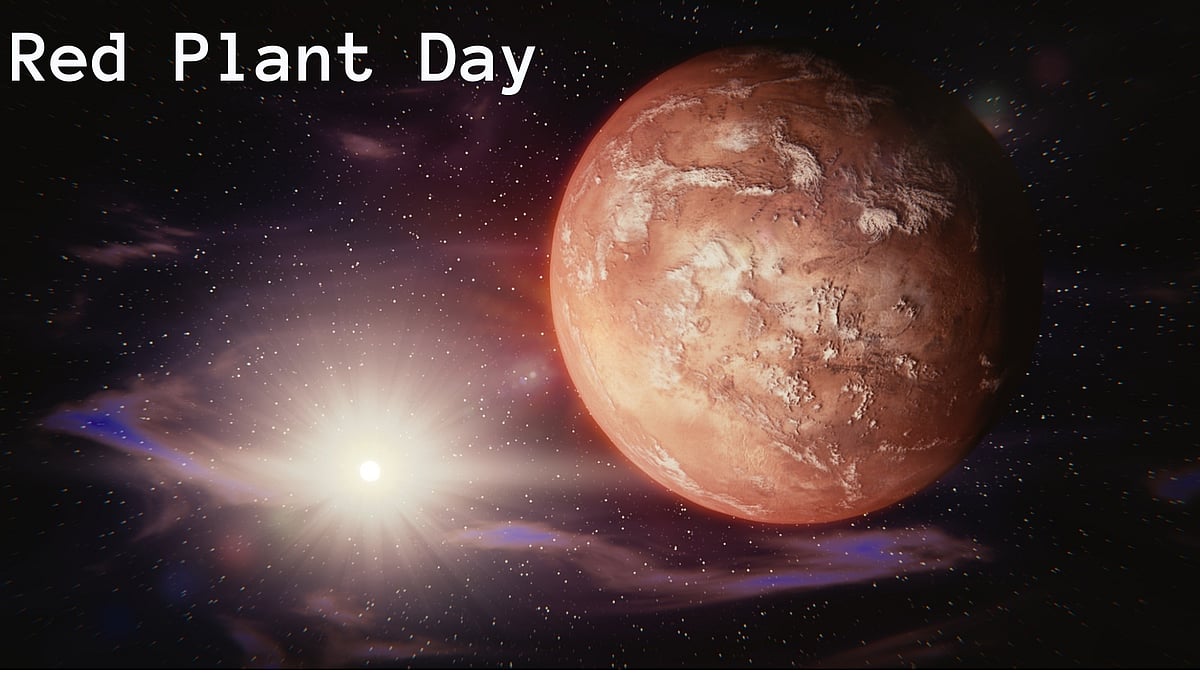When we think of the planet 'Mars' we tend to think about the mysterious and all the fiction that we have read so far and seen in the movies. Tomorrow, November 28, is the day set aside to celebrate this red planet, which has long piqued the interest of scientists and researchers alike.
Mars, the 'red planet, and the next option for people to live after the home planet 'Earth,' has always been mysterious. The distance between the Earth and Mars is around 83.006 million km, which also makes it a little difficult to study due to the distance, but in the past few years, all scientists, researchers, and even business people have developed many missions that have helped the people on Earth.
What is the significance of 'Red Planet Day?
Around 400 BC, the Babylonians began keeping track of and recording all celestial events. Mars was initially dubbed 'Nergal, the King of Conflicts,' because the planet's colour was associated with the blood shed during armed encounters with enemies. The ancient Greeks and Romans must have felt the same way, because Ares and Mars were both known as gods of war in their respective pantheons.
As time passed and the possibility of one day travelling among the stars increased, many authors and filmmakers took advantage of the sense of wonder surrounding the 'Red Planet and created the world of science fiction.
But one of the big questions was whether Mars held good old-fashioned water, which is the source of any planet. Flyby missions detected few polar ice caps, and the ancient 'canals' were shown to be optical illusions, but that didn't stop many believers from assuming that there had previously been civilizations on the fourth planet from the sun.
From the classic novel 'Stranger in a Strange Land' by 1950s author Robert Heinlein to 2015's Ridley Scott blockbuster 'The Martian,' starring Matt Damon, it still makes sense that imaginations have exploded around the idea of life on Mars.
Around this century, many missions, such as orbiter and rover missions, were sent to the Martanian surface to gather more information about the planet.
Now, Red Planet Day commemorates the launch of the Mariner 4 spacecraft on November 28, 1964. The first successful flyby of Mars was carried out by Mariner four, which sent back the first images of the Martian surface.
Some interesting and unknown facts about the mysterious Red Planet:
Mars became dead around four billion years ago:
Mars' core, around four billion years ago, became completely inactive, its magnetic field disappeared, and the soil wind stripped the autosphere away.
After Earth, Mars is the next best option for a permanent residence:
It has always been believed that after Earth, Mars would be the most habitable planet in the entire solar system due to several reasons, like its soil, which contains water that can be extracted. The temperature is moderate, as it is neither too cold nor too hot, and, most importantly, there is enough sunlight to power the solar system.
Oxygen on Mars?
The automosphere of the Red Planet has several layers of gases surrounding it. The planet also contains traces of water vapor, oxygen, carbon monoxide, hydrogen, and other noble gases.
Mars surface:
Scientists have also discovered a few fragments of meteorites that were violently ejected from Mars and then orbited the solar system among galactic debris for millions of years before collapsing on Earth.
It has the tallest mountain in the entire universe:
Mars is also home to the tallest mountain in the entire solar system, which is called Olympus Mons, a shield volcano that is still believed to be active.
Mars and Earth have similar landmasses:
Even though Mars has only 15 percent of the Earth’s volume and just over 10% of the Earth’s mass, around two-thirds of the Earth’s surface is covered in water, and Mars’ surface gravity is only 37% of the Earth’s, meaning you could leap nearly three times higher on Mars!
Blue sunsets:
The sunsets that we typically see on earth are a mixture of different shades of orange and yellow, but the sunset on Mars is 'blue,' and the daytime sky is 'pinkish-red,' which is completely opposite to what we see on our home planet.








